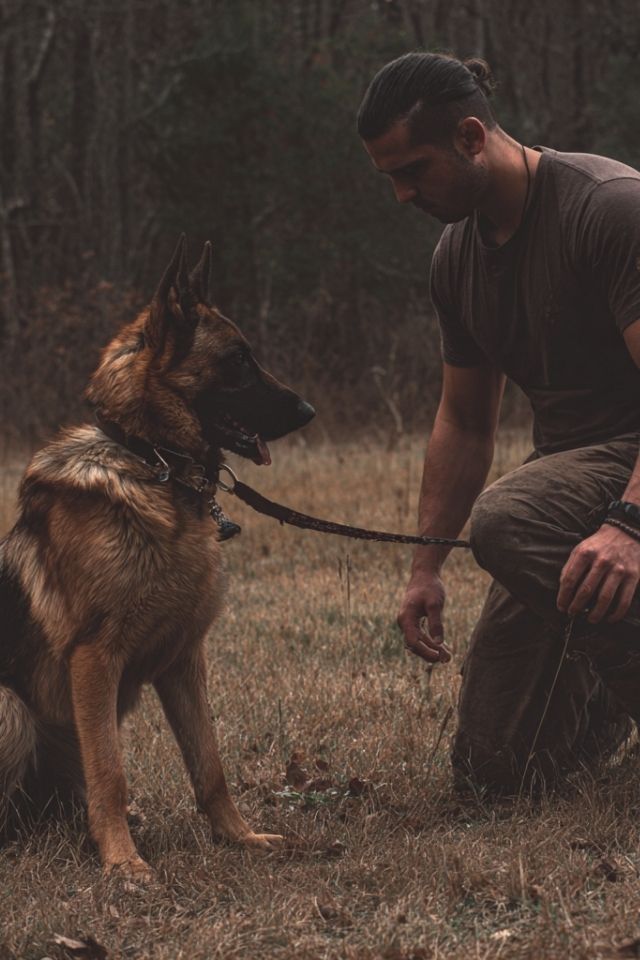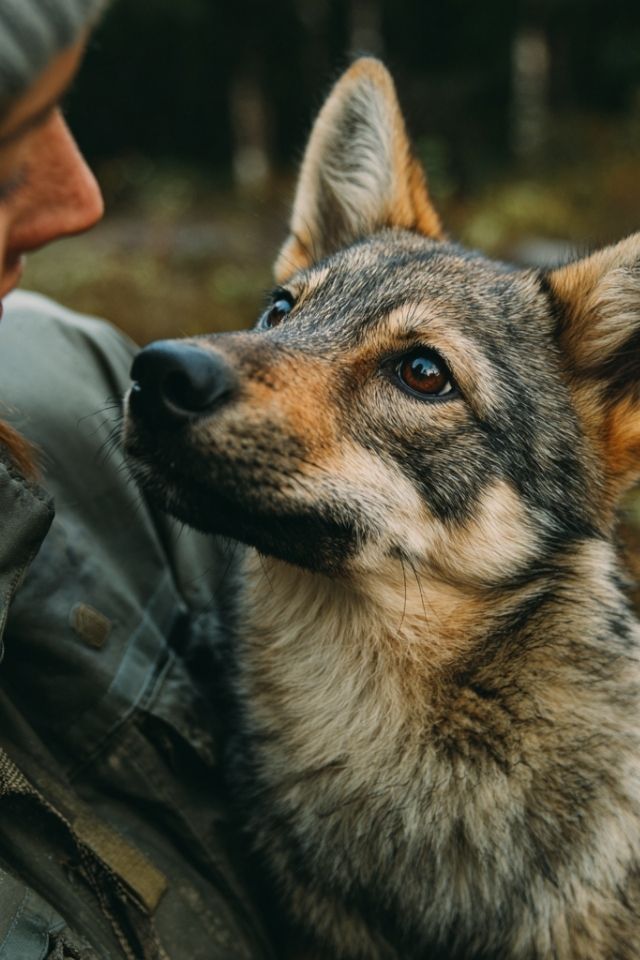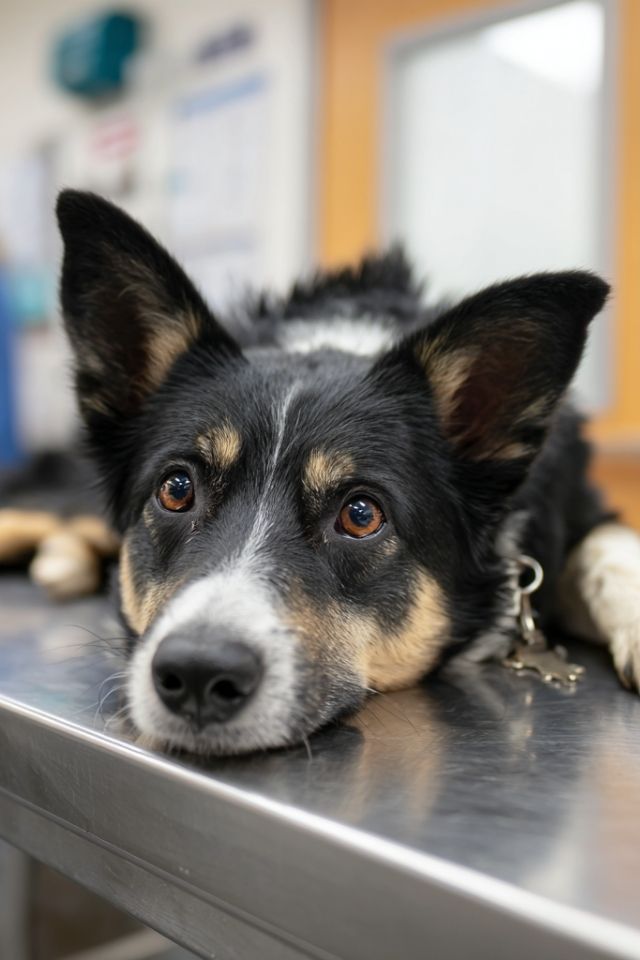The Morning That Changed Everything
Picture this: A grey Tuesday morning, mist hanging low over the park. Sarah stands with Luna, her Golden Retriever, the leash forming a taut line between them like an unfinished sentence. “Sit,” Sarah says, her voice carrying that particular note of forced patience we all know too well. Luna stands perfectly still, golden eyes fixed on something just beyond Sarah’s shoulder—not defiant, not rebellious, but present in a way that speaks volumes if we know how to listen.
This is the moment. The moment where we typically apply that worn-out label: stubborn.
But what if Luna’s stillness isn’t resistance at all? What if, in that suspended moment between command and response, she’s writing a different story entirely—one written in the language of racing heartbeats, flooding stress hormones, and neural pathways temporarily rerouted by something we haven’t yet learned to see?
This journey we’re about to take together isn’t about fixing stubborn dogs. It’s about discovering that stubbornness itself is a myth—a convenient label we’ve created to explain something far more complex and beautiful. It’s about learning to read the stories our dogs are constantly telling us through their bodies, their hesitations, their moments of apparent defiance that are actually profound communications from souls trying desperately to be understood.
Part I: The Architecture of Misunderstanding
When the Brain Builds Different Roads
In that moment when Luna stood frozen in the morning mist, her brain was constructing an entirely different map than the one Sarah expected her to follow. You see, inside every dog’s mind exists what we might call the NeuroBond architecture—intricate neural pathways that connect emotion, memory, and behavior in ways that can either open doors to connection or slam them shut in self-protection.
Imagine Luna’s amygdala—that ancient guardian of survival—suddenly lighting up like a constellation. Perhaps it was the way the mist carried the scent of a predator from miles away, or how the morning light created shadows that whispered of dangers only her primitive brain could recognize. In that instant, cortisol began its familiar flood, and the learning centers of her brain—those gentle spaces where “sit” usually lives—became as unreachable as stars behind storm clouds.
This isn’t stubbornness. This is biology writing its own urgent story.
I once worked with a Border Collie named Atlas whose guardian swore he was the most stubborn dog alive. “He knows these commands perfectly at home,” she’d say, frustration painting every word. But when we looked closer—really looked—we discovered Atlas wasn’t stubborn at all. His exquisite sensitivity meant that in new environments, his brain was processing thousands of micro-signals we humans couldn’t even perceive. The fluorescent buzz of park lights, the ultrasonic whine of a smartphone, the chemical signature of anxiety from a dog three blocks away—Atlas was drowning in a sensory ocean while being asked to perform calculus.
The Inheritance of Independence
Some stories are written in DNA, passed down through generations of dogs who survived because they thought for themselves. The magnificent Shiba Inu who seems to consider your recall request rather than obey it carries the wisdom of ancestors who hunted in Japanese mountains, making split-second decisions without human input. The Afghan Hound who appears to ignore your training attempts descends from dogs who pursued gazelles across vast distances, trusting their own judgment over any distant human voice.
When we label these dogs stubborn, we’re misreading an ancient text. Their independence isn’t defiance—it’s their inheritance, as precious and valid as any treasured family heirloom.
Part II: The Emotional Undertow
Three Rivers Running Beneath
Beneath every moment of apparent stubbornness flow three rivers of emotion, each capable of sweeping away our best training intentions like leaves in a current.
The River of Anxiety runs deep and often invisible. I remember meeting Jasper, a Labrador whose guardian couldn’t understand why he’d suddenly become “stubborn” about car rides. But if you watched carefully—if you truly observed with what I call soul-sight—you’d notice the almost imperceptible tremor in his back legs, the way he’d lick his lips repeatedly, how his breathing shifted to shallow pants even in cool weather. Jasper wasn’t being stubborn. He was drowning in anxiety waves triggered by a fender-bender three months prior that his human had already forgotten but his body remembered with crystalline clarity.
The River of Over-Arousal rushes fast and wild. Picture Bella, a young Vizsla who would spin and vocalize when asked to heel, appearing completely stubborn about leash walking. But Bella wasn’t refusing—she was overflowing. Her arousal levels had rocketed so high that her thinking brain had essentially gone offline, leaving only the spinning, whirling energy of a nervous system with no outlet. Asking Bella to heel in that state was like asking a waterfall to flow backward.
The River of Confusion meanders in circles, never quite finding its way. This is perhaps the most heartbreaking river, where dogs paddle frantically trying to understand what we want while we keep changing the rules. “Down” sometimes means lie down completely, sometimes means get off the couch, sometimes means stop jumping. Our inconsistency creates a maze where every path might be wrong, and what looks like stubbornness is actually a soul saying, “I want to connect with you, but I don’t understand the language you’re speaking.”
The Grammar of Bodies
Dogs speak fluently in a language that requires no words—what I call the Invisible Leash of communication that connects us if we learn to feel its pull. Every turned head, every shifted weight, every held breath is a sentence in this physical grammar.
When Max, a German Shepherd, would turn his head away during training, his guardian saw defiance. But Max was actually saying, in the clearest way he knew how, “This is too much for me right now. I need space to process.” That head turn was punctuation—a comma asking for a pause, not a period ending the conversation.
The absence of response speaks volumes too. When your dog “ignores” a well-known command, they’re not giving you the silent treatment. They’re often telling you that something in their inner or outer environment has shifted, making compliance impossible in that moment. This non-response is valuable data, a diagnostic reading of their emotional state that we’d be wise to honor.
Part III: The Revolution of Relationship
From Obedience to Partnership
Something profound happens when we stop demanding obedience and start building partnership. It’s like watching the sun break through after weeks of grey—suddenly, everything is illuminated differently.
I witnessed this transformation with a Beagle named Harper whose guardian had tried everything to address her “stubborn” recall. Traditional training had created a dog who would sometimes come, sometimes not, with no apparent pattern. But when we shifted the entire paradigm—when we stopped making recall a command and started making it an invitation to connection—everything changed.
We began with what I call Soul Recall preparation. Before ever asking Harper to come, her guardian would spend five minutes just being present with her, breathing together, creating what neuroscientists would recognize as co-regulation but what felt more like a meditation between species. Only when Harper’s body showed soft signals—gentle tail wags, relaxed ears, that particular quality of attention that says “I’m with you”—would they begin.
The recall itself became a dance of joy rather than a demand for compliance. Harper’s guardian would call her with genuine delight, moving backward with arms open like greeting a long-lost friend. When Harper chose to come—and increasingly she did choose—the celebration was authentic, not performative. When she chose not to come, her guardian would simply note what environmental or emotional factors might be at play, without judgment or frustration.
This is the NeuroBond method in action—recognizing that true connection happens at the level of the nervous system, not through dominance or even positive reinforcement alone, but through a kind of emotional attunement that honors both beings in the relationship.
The Art of Environmental Orchestration
Every space tells a story to our dogs, and sometimes what seems like stubbornness is simply a response to an environmental narrative we haven’t learned to read.
Consider the tale of two training sessions: In the first, we’re in a bustling park with children playing, dogs barking, and the urban symphony of sirens and traffic creating a constant soundtrack. Here, asking a sensitive dog to perform precision heelwork is like asking a pianist to perform a concert while construction work happens next door. The dog isn’t stubborn—they’re overwhelmed by the environmental orchestra.
In the second session, we’ve created what I call a “learning sanctuary”—a quiet space with minimal distractions, perhaps with the gentle sound of classical music that research shows can calm the canine nervous system. The same “stubborn” dog suddenly becomes eager, focused, engaged. We haven’t fixed a behavioral problem; we’ve simply turned down the environmental volume to a level where connection becomes possible.
Part IV: The Nourishment of Understanding
When Food Becomes Feeling
There’s a hidden story written in every meal we offer our dogs—a narrative that profoundly influences what we perceive as behavioral choices. The food in their bowl doesn’t just fuel their bodies; it shapes their emotional landscape in ways we’re only beginning to understand.
I once worked with Shadow, a black Labrador whose “stubborn” episodes followed a mysterious pattern his guardian couldn’t decode. Some days Shadow was brilliant—responsive, eager, that quality of presence that makes training feel like dancing. Other days, he seemed like a different dog entirely—disconnected, resistant, almost absent despite being physically present.
The breakthrough came when we started keeping a detailed journal, not just of training but of everything—including meals. We discovered Shadow’s “stubborn” days consistently followed meals with a particular brand of treats that contained artificial colors and preservatives. It wasn’t defiance we were seeing; it was inflammation expressing itself through behavior. His body was speaking through his actions, telling us about a discomfort that had no other voice.
When we shifted Shadow to a whole-food diet rich in omega-3s and free from inflammatory triggers, the transformation was profound. The “stubborn” dog didn’t become obedient—he became present. There’s a difference. Obedience is compliance; presence is partnership.
The Chemistry of Calm
Inside every dog’s gut lives a second brain—millions of neurons that communicate directly with the brain in their head, creating what scientists call the gut-brain axis. This isn’t metaphorical; it’s magnificently literal. The bacteria in your dog’s digestive system actually produce neurotransmitters that influence mood, focus, and the ability to learn.
When we support this system with probiotics, when we offer foods that nourish rather than inflame, we’re not just feeding a body—we’re nurturing a state of being that makes connection possible. That “stubborn” moment might actually be a disrupted microbiome crying out for balance.
Part V: The Wisdom of Age
When Time Rewrites the Rules
There comes a moment in every dog’s life when the rules of engagement must be rewritten—not because they’ve become stubborn, but because time has transformed their world in ways we must learn to see.
I think of Magnus, a thirteen-year-old German Shepherd whose guardian came to me in tears. “He used to be so obedient,” she said, “but now he ignores me completely.” But when I watched Magnus, I saw something different. I saw the subtle head tilt that suggested he was trying to locate sounds his diminished hearing could barely catch. I saw the cautious way he placed each paw, feeling for stability his clouding eyes could no longer guarantee. I saw the momentary confusion when asked to lie down—not defiance, but the hesitation of a body that knew the journey down was easy but the journey back up would hurt.
Magnus wasn’t stubborn. He was navigating a world that had become foreign territory, using a body that no longer responded to his wishes with the same reliability. Every moment of non-compliance was actually a moment of self-preservation, wisdom earned through years of living.
We adapted everything for Magnus. “Sit” became “stand-stay” to protect his hips. Recall included a flashlight signal for his diminishing vision. Training sessions became five-minute connections rather than twenty-minute expectations. And in making these adaptations, something beautiful happened—Magnus bloomed again, not with the explosive energy of youth but with the gentle engagement of an elder who felt seen, understood, and honored.
The Sacred Slowness
There’s something profound about training a senior dog once we release our attachment to speed and precision. It becomes less about behavior and more about connection, less about obedience and more about presence.
Senior dogs teach us that stubbornness is often wisdom in disguise. That pause before responding might be a body checking if movement is safe. That selective hearing might be a brain conserving energy for what truly matters. That apparent confusion might be a nervous system that needs more time to process in a world moving too fast.
When we slow down to match their pace, when we adapt our expectations to honor their reality, we discover that senior dogs aren’t stubborn—they’re teachers, showing us that relationship transcends performance, that connection outlasts compliance, that love adapts to meet us wherever we are in our journey.
Part VI: The Practical Magic
Transforming Moments of Resistance
Let me share with you three common scenarios where “stubbornness” dissolves into understanding when we shift our perspective:
The Frozen Recall: Your dog is in the yard, you call them, and they stand perfectly still, looking at you but not moving. Traditional thinking says they’re being stubborn. But watch more carefully. See how their weight shifts slightly backward? Notice the whale eye—that crescent of white showing they’re torn between desires? This isn’t defiance. This is a dog caught between competing motivations, frozen in indecision.
The solution isn’t louder commands or bigger rewards. It’s what I call the “Release and Invite” technique. Release them from the pressure of the command with a gentle “okay, your choice,” then make yourself irresistibly interesting. Run the opposite direction. Laugh genuinely. Become the most fascinating thing in their environment. Watch how “stubborn” transforms into enthusiastic participation when we remove pressure and add joy.
The Training Shutdown: You’re five minutes into a training session when your dog suddenly seems to forget everything they know. They won’t sit, won’t focus, won’t engage. They’re not being stubborn—they’ve hit what I call their “learning threshold.” Just as our muscles fatigue with exercise, the learning brain fatigues with mental effort.
The answer is the “Reset Ritual.” Stop asking for behaviors. Spend two minutes just breathing together, maybe gentle massage, perhaps a slow mindful walk with no agenda. Then try one simple, well-known behavior. If they respond, celebrate and end on success. If they don’t, honor that communication and try again tomorrow. Sometimes the bravest thing we can do in training is nothing at all.
The Selective Listening: Your dog performs perfectly at home but seems to forget everything in public. This isn’t stubbornness—it’s context dependency combined with environmental overwhelm. Dogs don’t generalize well naturally; “sit” in the kitchen is literally a different behavior than “sit” at the park in their minds.
Practice what I call “Environmental Laddering.” Start with the easiest environment and gradually add complexity. Kitchen to backyard to front yard to quiet street to busy park. At each level, reduce your expectations to match your dog’s capacity. Better to have a solid sit in the backyard than a forced compliance in chaos that creates negative associations.
The Journey Home
As our journey together draws to a close, I want you to picture that misty morning again. Sarah and Luna, the leash between them no longer taut with tension but relaxed like a gentle conversation. Luna isn’t sitting because Sarah commanded it—she’s settling because Sarah finally understood what she was saying all along.
“I need a moment,” Luna’s stillness had whispered. “The world is very loud today,” her distant gaze had explained. “I want to connect with you, but I need you to meet me where I am,” her patient standing had pleaded.
And Sarah, finally fluent in this wordless language, had listened.
This is the revolution that awaits when we stop seeing stubbornness and start recognizing communication. Every moment of resistance becomes a doorway to deeper understanding. Every “failed” training session becomes valuable information about what our dogs need from us. Every frustrated interaction transforms into an opportunity to strengthen the Invisible Leash that connects our souls across species.
Your “stubborn” dog is not broken, difficult, or defiant. They are eloquent in a language we’re only just beginning to learn, patient teachers waiting for us to become better students, complex emotional beings navigating a human world with remarkable grace despite our frequent misunderstandings.
The question isn’t whether your dog will stop being stubborn—they were never stubborn to begin with. The question is whether we’re ready to stop talking long enough to listen, to stop commanding long enough to connect, to stop labeling long enough to truly see the magnificent being standing before us, writing stories in behavior that speak of needs, fears, joys, and a deep desire for understanding.
In this space between command and response, between expectation and reality, between human agenda and canine truth, lives the most profound possibility: genuine partnership. Not the old paradigm of master and obedient servant, but two different species finding a common language, building a bridge of understanding that honors both ends of the leash.
Your dog is waiting there now, in that sacred space, ready to show you that what you thought was stubbornness was actually an invitation—an invitation to go deeper, to understand more fully, to connect more truly. Will you accept it?
The mist is lifting. The morning light grows stronger. And in this new illumination, there are no stubborn dogs—only misunderstood souls waiting for someone to finally speak their language.
Welcome to the conversation that changes everything. Welcome to the NeuroBond. Welcome home. 🕊️






